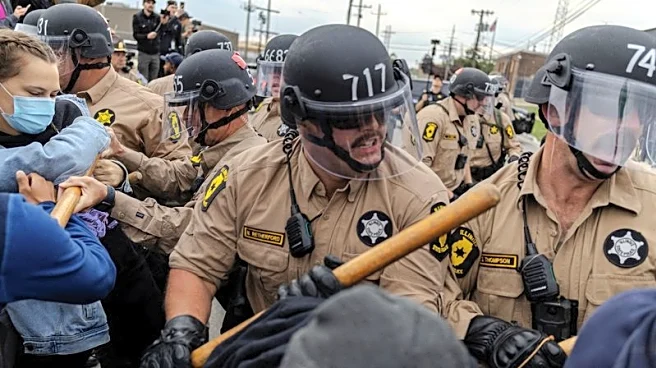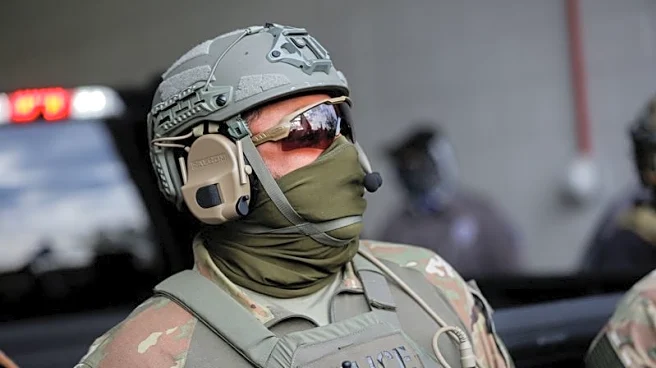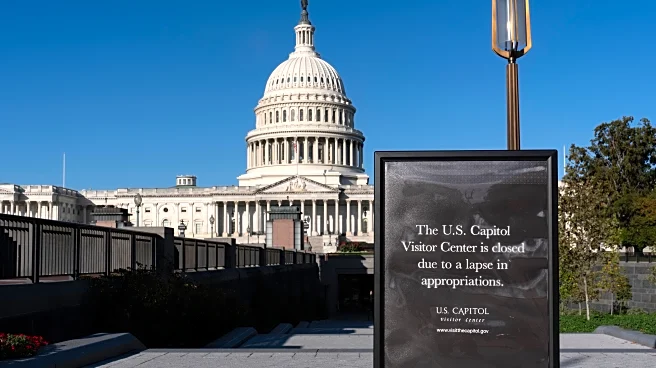What's Happening?
Federal officials from the Trump administration appeared in court to address concerns raised by U.S. District Judge Sara Ellis regarding their handling of protests against immigration enforcement in Chicago.
The hearing focused on the use of body-worn cameras by Customs and Border Protection (CBP) agents and their compliance with a court order to avoid using less-lethal munitions and tear gas without warning. Deputy Incident Commander Kyle Harvick assured the court that all CBP agents in Chicago are equipped with body cameras and are aware of their obligations to use them. The hearing was prompted by reports suggesting that agents might have violated the judge's order during recent protests. Judge Ellis expressed dissatisfaction with the administration's response and emphasized the need for transparency and accountability in the agents' actions.
Why It's Important?
The court proceedings highlight ongoing tensions between federal immigration enforcement efforts and local communities in Chicago. The judge's insistence on body-worn cameras and adherence to crowd control protocols underscores the importance of accountability and transparency in law enforcement, particularly in the context of protests. The outcome of this case could influence how federal agencies conduct operations in urban areas, potentially affecting public trust and the relationship between law enforcement and communities. The situation also reflects broader national debates on immigration policy and the use of force by federal agents, with implications for civil liberties and human rights.
What's Next?
Judge Ellis has indicated that she will continue to seek answers from federal officials regarding their compliance with her orders. If the current testimony does not satisfy her concerns, she may call for additional hearings or require further documentation. The ongoing protests and the court's scrutiny could lead to changes in how federal agencies manage demonstrations, possibly resulting in revised protocols or increased oversight. The situation remains dynamic, with potential implications for future immigration enforcement actions and protest responses across the country.













